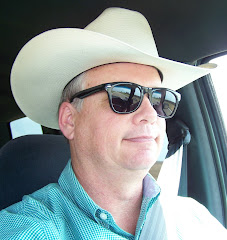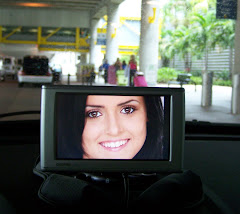Junction Texas
Lum’s Bar-B-Que – You might not know that it is illegal to go to Junction Texas and not stop at Lum’s Bar-B-Que and eat a Lum’s rib. Even if it wasn’t you would want to stop there anyway. Their other bar-b-qued meats are great too, but they make absolutely the best ribs I have ever eaten.
About Junction Texas:
To encourage settlement of the new frontier in the 1820's and 1840's the Republic of Texas granted large portions of land to prospective impresarios. Among the more notable grants was the one issued to Francis Fisher, Buchard Miller and Joseph Baker. Comprising some 3,000,000 acres of land between the Llano and Colorado Rivers, the grant became known as the Fisher and Miller Colony. Click here to read more about Junction Texas.
Cattle Trail to Dodge City
The Llano River crossing became a main line of the spring cattle drives from 1867 to the 1880s. Capt. C. A. Schreiner and his partners herded cattle on their way to Abilene and Dodge City on the western trail; many area cowboys rode with them. Preceded by a trail boss and chuckwagon, as many as 2,000 cattle per herd took half a day to cross the Llano River. With the air full of dust, local ranchers sat on their horses watching their own cattle closely to ensure that none of their herd joined the trail drive.
Cattle herds of Real, Frio, Kerr, Kimble, Medina, Edwards, Uvalde counties. Capts. Chas. A. Schreiner and John Lytle put half a million "SL" cattle over this end of western trail, up to market in Dodge City. Also this way went herds of " 7 OL", Western Union Beef Co., Seth Mabry, Terry, Hodges and Schmelter ranches.
Alamo Village –
Brackettville Texas
Since I was very young I always wanted to see this movie set. Finely got my chance on this trip. Hope you enjoy the pictures and reading about it.
Click on the pictures for a larger view!


The set was built by James T. "Happy" Shahan of Brackettville, who in 1995 was named the "Father of the Texas movie industry" by Governor George W. Bush. Shahan began building the set on his ranch in September, 1957 for Wayne, who had tried for years to make a movie about the Battle of the Alamo for Republic Pictures, before finally breaking away to form Batjac Productions. Filming began in August, 1959.


Originally the set was to be facades of the front and sides of the buildings. However, Wayne ran out of money and called a halt to construction. Shahan agreed to continue working while Wayne raised more money, if Wayne would agree to building full sets with four walls, floor and roofs. Wayne signed on to the deal.

The set includes a full-scale re-creation of the Alamo compound as it would have appeared in 1836 (the real Alamo is in the middle of downtown San Antonio, Texas and is surrounded by modern buildings). The set also includes a representation of the village of San Antonio de Béxar of the same time period. The building of the set required over 1.5 million adobe bricks, 14 miles of gravel road and a 4,000-foot runway.



.
.
.
.
.
.
.
.
.
.
.
.
.
.
Shahan preserved the set after the end of the 1960 production and, over the years, over a dozen films about the Alamo have been shot there. In addition, over 100 other western movies as well as documentaries, music videos and commercials have been shot using various parts of the set. Frank Thompson, a film historian, noted that each production changed the set in some way, big or small, and that the changes appear in each new movie about the Alamo, documenting the current view of authenticity over time.

.
.
.
.
.
.
.
.
.
.
.
.
.
Since the filming of the 1960 version of The Alamo, the village has served primarily as a tourist attraction and has been important to the economy of Brackettville. In addition to the replica of The Alamo, the village includes a cantina and restaurant, a trading post, an Indian store, a church, a jail, a blacksmith shop, the John Wayne Western Museum, several museums, and a celebrity gallery. Alamo Village also maintains a large collection of antique tools, vehicles and other period props, as well as a herd of longhorn cattle. During the summer, live music and stage shows perform frequently, and over Labor Day weekend the Labor Day Horse Races bring large crowds to the village. Alamo Village is open to visitors year round except for December 21-26.




.
.
.
.
.
.
.
.
.
.
.
.
.
Some of the movies shot at this location include:
The Alamo (1960) - Produced, directed and starring John Wayne
Two Rode Together (1961) - starring James Stewart
Bandolero! (1968) - starring James Stewart, Raquel Welch and Dean Martin
Barbarosa (1982) - starring Willie Nelson
Good As Gold (1983 music video) by Red Rockers
Uphill All the Way (1986)
Alamo: The Price of Freedom (1988) - Imax
Lonesome Dove (1988) (TV) - starring Robert Duvall
Bad Girls (1994)
The Alamo (1960) - Produced, directed and starring John Wayne
Two Rode Together (1961) - starring James Stewart
Bandolero! (1968) - starring James Stewart, Raquel Welch and Dean Martin
Barbarosa (1982) - starring Willie Nelson
Good As Gold (1983 music video) by Red Rockers
Uphill All the Way (1986)
Alamo: The Price of Freedom (1988) - Imax
Lonesome Dove (1988) (TV) - starring Robert Duvall
Bad Girls (1994)
Once Upon a Time in China and America (1997) - a Chinese martial arts western
Bullfighter (2000)
Jericho (2000)
Bullfighter (2000)
Jericho (2000)
Goliad Texas, The Presido
La Bahia & The Republic of Texas
Presidio at Goliad
The presidio was one of the most fought-over sites in Texas. Every attempt to change the order of government in colonial Texas involved the capture of the fort. In 1812, it was the sight of the longest siege in Texas military history. Nine years later, it was the target of an American force attempting to conquer Texas for the United States. The presidio chapel was the site of the signing of the first Texas declaration of independence in 1835. And during the Texas Revolution in 1836, it served briefly as the headquarters of the Texan forces under Fannin and then as their temporary prison after their defeat at the battle of Coleto.
Presidio at Goliad
The presidio was one of the most fought-over sites in Texas. Every attempt to change the order of government in colonial Texas involved the capture of the fort. In 1812, it was the sight of the longest siege in Texas military history. Nine years later, it was the target of an American force attempting to conquer Texas for the United States. The presidio chapel was the site of the signing of the first Texas declaration of independence in 1835. And during the Texas Revolution in 1836, it served briefly as the headquarters of the Texan forces under Fannin and then as their temporary prison after their defeat at the battle of Coleto.

Grave of Colonel J. W. Fannin and His Men
After battle of Coleto (March 19 - 20, 1836), where a Texas Army under Col. James Walker Fannin met defeat by Mexicans in superior numbers, the Texas soldiers were held in Presidio La Bahia, supposedly as war prisoners. However, by order of Mexican Gen. Antonio Lopez de Santa Anna, approximately 400 of Fannin's men were marched out and massacred on Palm Sunday, March 27, 1836. The wounded were shot one by one in the fort compound. Col. Fannin was the last to die. Because of their profession, Drs. J. H. Barnard, J. E. Field and Jack Shackelford were spared; about 25 men were saved by a Mexican woman, "The Angel of Goliad". Approximately 30 escaped by feigning death or by swimming the San Antonio River. The Texans' corpses were stripped and partly burned, but left unburied. This atrocity three weeks after the fall of the Alamo gave Texans part of the battle cry--"Remember the Alamo! Remember La Bahia!"--under which decisive victory was won at San Jacinto on April 21, 1836. Gen. Thomas J. Rusk and the Texan Army afterwards marched here and gathered the bones of Fannin's men from the terrain. From Presidio La Bahia the remains were carried in procession to the grave, and there given a military funeral and burial on June 3, 1836.

 Presidio de Nuestra Senora de Loreto de la Bahia - (Fort of Our Lady of Loreto of the Bay) One of the most historic Spanish forts in Texas. Popularly called Presidio la Bahia, it was founded on Espiritu Santo (present Lavaca) Bay in 1722. Twice moved, it was re-established here in 1749 to protect Espiritu Santo Mission (1/4 mi. NW). In the chapel is the statue of Our Lady of Loreto placed here in 1749. The turbulent history of this fort has often rung with the sound of revolution. Between 1812 and 1820 several irregular "filibustering" forces, including the Gutierrez-Magee Expedition and others led by James Long and Henry Perry, occupied or assailed the fort for various idealistic and profiteering motives. Here, too, 92 Texas citizens and soldiers drew up and signed Texas' first formal Declaration of Independence on December 20, 1835. In the ensuing War for Texas Independence, Col. James Fannin and 341 prisoners of war were held and, on Palm Sunday, 1836, were massacred in and around the fort by their Mexican captors. When the fort was authentically restored, 1963-67, by the Kathryn O'Connor Foundation, nine "levels of occupancy" were uncovered. Church services are now held in the chapel. The presidio has been named a registered National Historic Landmark.
Presidio de Nuestra Senora de Loreto de la Bahia - (Fort of Our Lady of Loreto of the Bay) One of the most historic Spanish forts in Texas. Popularly called Presidio la Bahia, it was founded on Espiritu Santo (present Lavaca) Bay in 1722. Twice moved, it was re-established here in 1749 to protect Espiritu Santo Mission (1/4 mi. NW). In the chapel is the statue of Our Lady of Loreto placed here in 1749. The turbulent history of this fort has often rung with the sound of revolution. Between 1812 and 1820 several irregular "filibustering" forces, including the Gutierrez-Magee Expedition and others led by James Long and Henry Perry, occupied or assailed the fort for various idealistic and profiteering motives. Here, too, 92 Texas citizens and soldiers drew up and signed Texas' first formal Declaration of Independence on December 20, 1835. In the ensuing War for Texas Independence, Col. James Fannin and 341 prisoners of war were held and, on Palm Sunday, 1836, were massacred in and around the fort by their Mexican captors. When the fort was authentically restored, 1963-67, by the Kathryn O'Connor Foundation, nine "levels of occupancy" were uncovered. Church services are now held in the chapel. The presidio has been named a registered National Historic Landmark.
Battle of Coleto and Goliad Massacre
After the fall of the Alamo, March 6, 1836, Colonel James Walker Fannin, with about 400 soldiers, mostly volunteers from the United States in the Texas War for Independence, was ordered by Texas General Sam Houston to retreat from Goliad to Victoria. March 19, the heavy Mexican force of General Urrea surrounded the withdrawing Texas contingent near Coleto Creek, and bitter fighting ensued. Fannin's volunteers hurled back the assaults of the Mexican force. On the following day, faced with several times their number, the Texans surrendered in the belief they would be treated as prisoners of war of a civilized nation. After removal to Goliad, the Fannin men were marched out and massacred on Palm Sunday under orders of Santa Anna, the general of the Mexican armies. Thus dictator Santa Anna added another infamy to that of the Alamo and gave to the men who saved Texas at San Jacinto their battle cry, "Remember the Alamo, Remember Goliad". The memorial to Fannin and his men is near Goliad.


1779 The first major Texas cattle drive
After Spain joined the American colonists in declaring war on England in 1779, Spanish soldier Bernardo de Galvez traveled to New Orleans to raise an army. Aware of the great number of wild cattle in Texas from his time spent stationed in the region, Galvez asked the Spanish governor of Texas to send cattle to feed his troops. As a result, about 10,000 head of cattle from Texas missions and ranches were assembled at Presidio La Bahia. Between 1779 and 1782, in what is believed to be the first major Texas cattle drive, cattle were herded from La Bahia to Spanish soldiers preparing to fight in the American revolution along the Gulf Coast.








